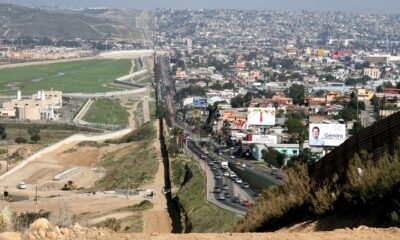(Sean Whaley/Nevada News Bureau) – Nearly 60 percent of Nevada’s major urban roadways are congested during peak travel times, a situation that will only worsen without significant improvements to the state’s transportation system, a report released today says.
The state has used a combination of federal and state funding to improve its surface transportation network over the past decade, but many needed road projects remain unfunded, according to the report released by TRIP, a Washington, D.C., based national transportation organization.
TRIP is a nonprofit group that promotes transportation policies that relieve traffic congestion, improve road and bridge conditions, improve air quality, make highway travel safer and enhance economic productivity.
The report, called “Future Mobility in Nevada: Meeting the State’s Need for Safe and Efficient Mobility,” says congestion on Nevada’s urban roadways will worsen as the economy begins to recover.
The report also found that:
– The state’s traffic fatality rate is higher than the national average;
– Twelve percent of the state’s bridges are deficient;
– Thirteen percent of the state’s major roads are rated in either poor or mediocre condition.
Because of these deficiencies, the average Las Vegas area motorist loses $1,481 each year in the form of extra vehicle operating costs due to poor road conditions, lost time and fuel caused by traffic congestion, and the cost of traffic crashes. Reno area drivers are estimated to lose $972 annually in similar costs.
According to the report, a number of needed transportation projects will not go forward without a boost in funding, including expanding portions of I-580 in Reno to six lanes, widening portions of U.S. 395 in Carson City to six lanes and expanding portions of I-515/U.S. 95 and I-15 in Las Vegas to 10 lanes.
The report projects that vehicle travel in Nevada will increase by another 70 percent by 2030, further congesting the state’s highways unless significant improvements are made.
This year’s federal American Recovery and Reinvestment Act provides about $201 million in stimulus funding for highway and bridge improvements and $49 million for public transit improvements in Nevada, but TRIP says this is only a “down payment” on needed transportation improvements.
“It is critical that the state adequately fund its transportation system and that Congress produces a timely and adequately funded federal surface transportation program this year,” said Will Wilkins, executive director of TRIP. “Thousands of jobs and the state’s economy are riding on it.”
Much of the information in the report was supplied by the Nevada Department of Transportation. Agency spokesman Scott Magruder said: “Our position is we have far more transportation needs statewide than funding available.”
There is no plan in place at this point on how to fill the gap between need and available funding, he said. In the meantime, the agency will continue to use federal gas tax funds and available ARRA funds to move forward with projects, Magruder said.
TRIP spokeswoman Carolyn Bonifas said the report does not make any specific recommendations on how to bridge the gap between transportation needs and funding.
“Our purpose is to put the information on the table so the governor and Legislature can be ready to make those decisions,” she said. “There are as many solutions as there are states.”
Given Nevada’s current economic condition, getting road projects off the drawing boards and under way would put people to work and help the economy, Bonifas said. It would also ensure a quality transportation system for Nevada that will be critical as the economy recovers and businesses look to relocate or expand, she said.




Facebook
Twitter
Pinterest
RSS